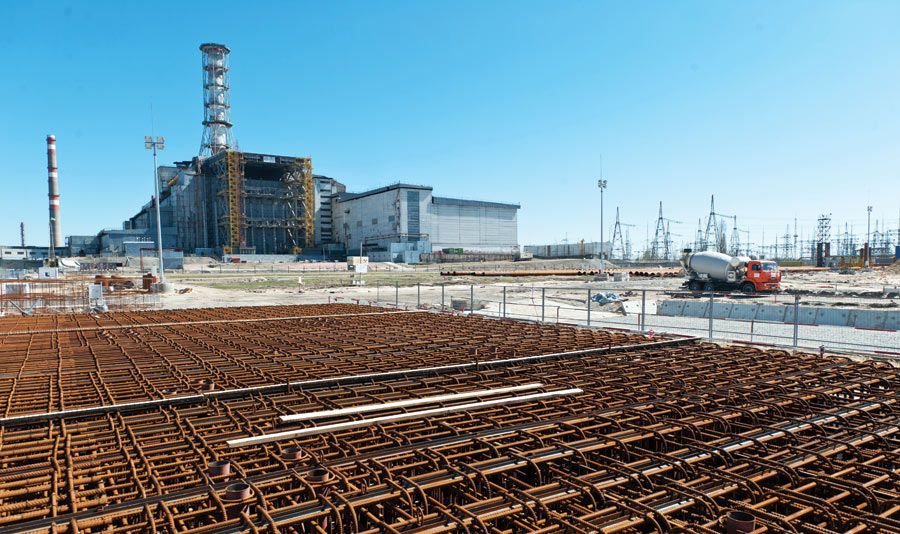Nuclear Cleanup
Twenty-five years after the Chernobyl disaster, the work goes on.


In the months after the explosion, Soviet authorities organized a construction project that involved remotely operated cranes and almost 100,000 workers. They erected a temporary concrete-and-steel structure to enclose the reactor, even as experts speculated on the possibility of another explosion. The red walls seen here beneath the looming cranes are the beginnings of the structure, which came to be called the sarcophagus.

The explosion scattered highly radioactive chunks of graphite from the reactor’s core over the roof of an adjacent building. Here, a worker scoops up a piece of the hazardous material. Protective lead sheets are tied to his clothes. To avoid radiation poisoning, workers limited their shifts to less than a minute each.

Light streams through gaping holes in the makeshift sarcophagus in this view from inside the ruined reactor building. A project undertaken to seal these holes against escaping radiation, and to prop up the walls of the sarcophagus, was finished in 2008. The ruins inside the sarcophagus remain vulnerable. If they collapse, it could become impossible to move buried radioactive materials to a permanent storage facility.

The last Chernobyl reactor, number 3, wasn’t shut down until 2000. The 20,000 containers of spent fuel that had accumulated over the years must be kept cool to avoid a fire that could release radiation
 . Today, most of the fuel is stored in water under the metal plates in the facility seen here. Tubes containing the fuel are visible in the foreground. (Some of the fuel is still stored in pools at the reactors.)
. Today, most of the fuel is stored in water under the metal plates in the facility seen here. Tubes containing the fuel are visible in the foreground. (Some of the fuel is still stored in pools at the reactors.) 

View panoramas of the nuclear cleanup at Chernobyl.
Keep Reading
Most Popular
Large language models can do jaw-dropping things. But nobody knows exactly why.
And that's a problem. Figuring it out is one of the biggest scientific puzzles of our time and a crucial step towards controlling more powerful future models.
How scientists traced a mysterious covid case back to six toilets
When wastewater surveillance turns into a hunt for a single infected individual, the ethics get tricky.
The problem with plug-in hybrids? Their drivers.
Plug-in hybrids are often sold as a transition to EVs, but new data from Europe shows we’re still underestimating the emissions they produce.
Stay connected
Get the latest updates from
MIT Technology Review
Discover special offers, top stories, upcoming events, and more.